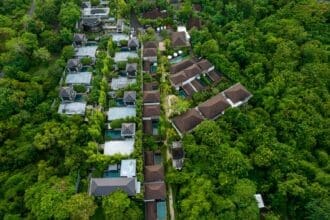A quiet but powerful revolution is unfolding in the world of real estate investment. It’s no longer just about location and square footage. The new currency determining the long-term value and profitability of a property is its energy efficiency. Smart investors realize that green property investing is not merely an ethical choice but a pragmatic financial strategy that yields significant dividends, especially in markets like Italy and Spain that are actively incentivizing this transition.
Content
Why “Green Investing” in Property is No Longer a Niche, but a Necessity
The concept of a “green premium” is simple: energy-efficient buildings (Class A, B) sell and rent faster and at a higher price than their less efficient counterparts (Class F, G). The reasons for this are complex and undeniable. Firstly, operating costs are drastically lower. Smaller electricity and heating bills are a direct monthly bonus for both the owner and the tenant. Secondly, the living comfort is incomparably higher, with no drafts, dampness, or temperature anomalies. Thirdly, and perhaps most importantly in the long run, these properties are future-proofed against upcoming regulations and “climate taxes.”
With the new Energy Performance of Buildings Directive (EPBD), the European Union is setting a clear course: by 2050, the entire building stock must be zero-emission. This means that properties with low energy ratings will become increasingly expensive to maintain and harder to sell. Therefore, any green investing today is a preemptive strike against future depreciation.
Italy: Europe’s Champion of Government Incentives for Energy Efficiency
Italy is arguably the most generous country in the EU when it comes to stimulating energy efficiency. For international investors considering buying a property in Italy, understanding these mechanisms is key to maximizing returns.
Ecobonus: Your Partner in Renovation
Ecobonus is a tax deduction that allows owners to subtract a significant percentage of their energy upgrade expenses from their taxes. This includes activities such as:
- Installing thermal insulation (exterior coating)
- Replacing window frames and windows
- Installing solar panels
- Replacing heating and cooling systems with more efficient ones (heat pumps)
The deduction percentage varies depending on the type of renovation and the improvement achieved in the energy class.
Bonus Ristrutturazioni: A Comprehensive Approach to Modernization
This bonus is aimed at more general construction and renovation work but is often combined with the Ecobonus. It covers 50% of renovation costs up to a certain ceiling, allowing investors to carry out a complete modernization that not only increases energy efficiency but also the overall aesthetic and market value of the property. It is the perfect tool for anyone planning a renovation on a limited budget with the goal of maximizing value.
How Can an International Investor Benefit?
To take advantage of these bonuses, you must be a taxpayer in Italy. The procedure requires strict documentation of all expenses through bank transfers with a specific purpose (bonifico parlante) and the filing of the relevant declarations. Consulting with a local accountant (commercialista) and a technical expert (geometra, architetto) is absolutely mandatory.
Spain: The Rise of “Green Mortgages” and Regional Programs
While Italy focuses on tax relief for renovations, Spain also approaches the issue from the financing side. The green investing strategy here is strongly supported by the banking sector and regional authorities.
What are “Green Mortgages”?
More and more Spanish banks are offering so-called “green mortgages” (hipotecas verdes) for the purchase of properties with a high energy class (A or B) or for renovating existing homes to increase their efficiency. The advantages for the buyer are tangible:
- Lower interest rates: Banks offer discounts on the standard interest rate, making the loan cheaper in the long term.
- Better loan conditions: May include lower origination fees or a longer repayment term.
This trend makes buying a new, energy-efficient property in Spain more advantageous than buying an old property that needs expensive renovation.
Regional Incentives: The Hidden Opportunities
In addition to banking products, many of Spain’s autonomous communities (Comunidades Autónomas) offer their own programs to subsidize energy efficiency. These can be in the form of direct grants or additional tax deductions. It is important for investors to research the specific opportunities in their target region, as they vary significantly.
The Long-Term Profit: Beyond the Subsidies
Although government incentives and cheaper financing are powerful catalysts, the true value of this green investing is revealed in the long term. Class A properties are insured against future environmental taxes and regulations. They are more attractive to high-quality, long-term tenants who value comfort and low bills. And last but not least, upon resale, the energy performance certificate will be one of the first documents buyers will request. The “green premium” will transform from a bonus into a standard, and low-class properties will suffer a significant “brown discount.” Investing in energy efficiency today is the safest bet for the future liquidity and profitability of your portfolio.
External Source: For more information on the pan-European policy, you can consult the European Commission’s Energy Performance of Buildings Directive (EPBD).
You might also like:
- Property in Istanbul: High yield or unjustified risk?
- Abu Dhabi’s New Megaproject: A $15 Billion City is Rising in the Al Mamoura District
- Why Bulgarians buy property in Greece: from dreams to reality and income
This post is also available in: Български







